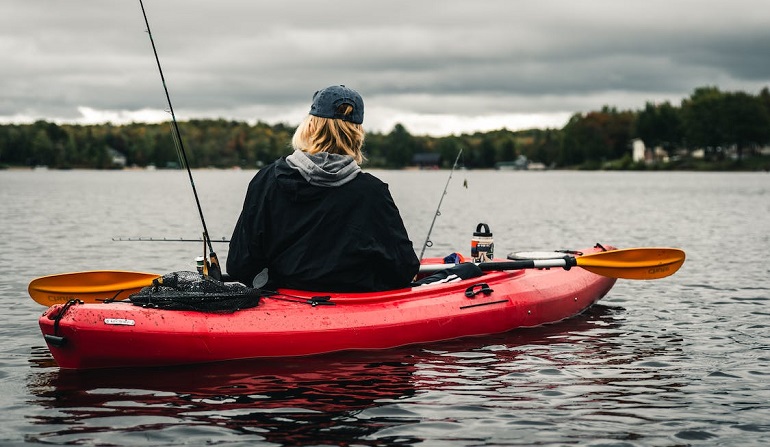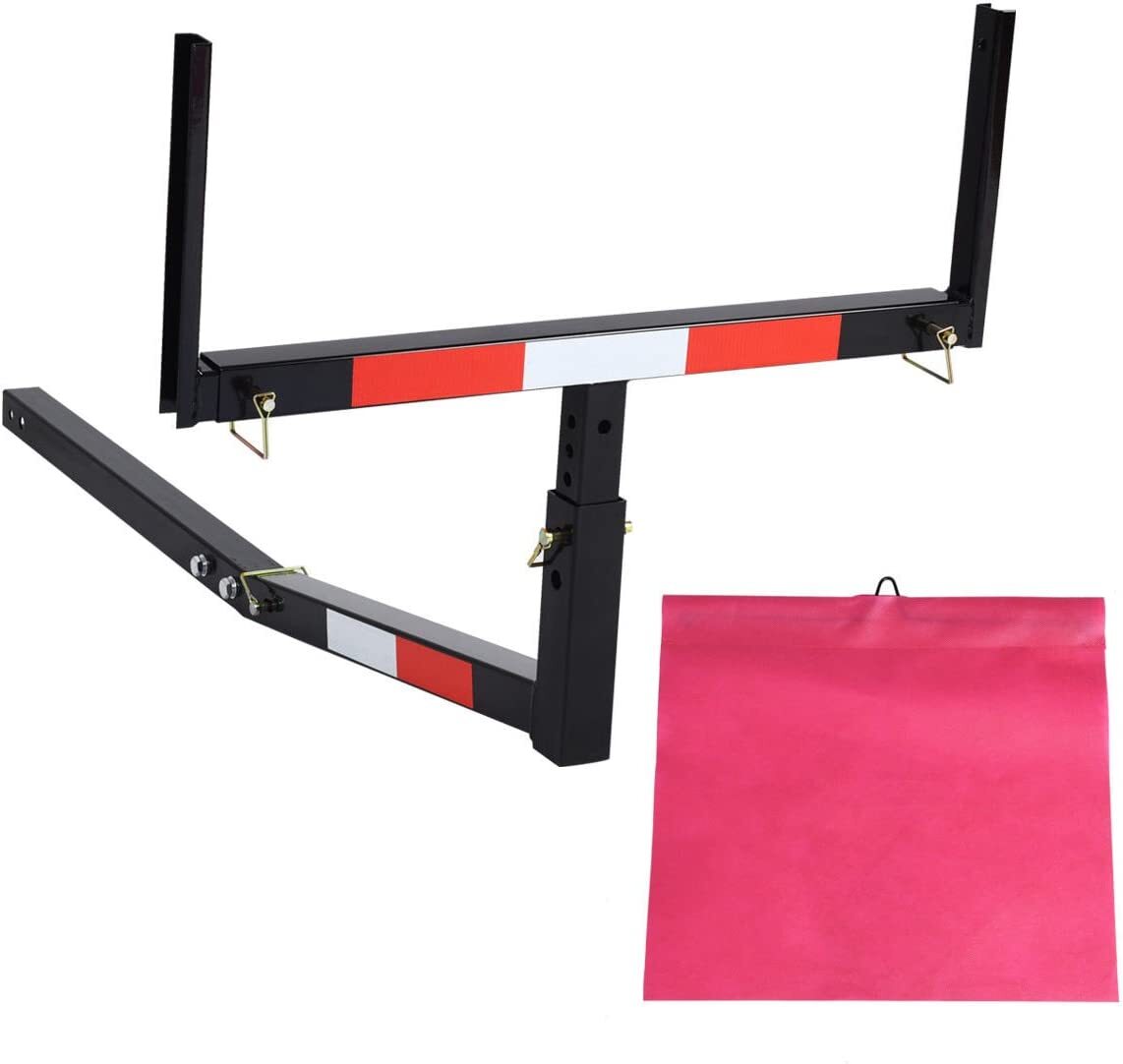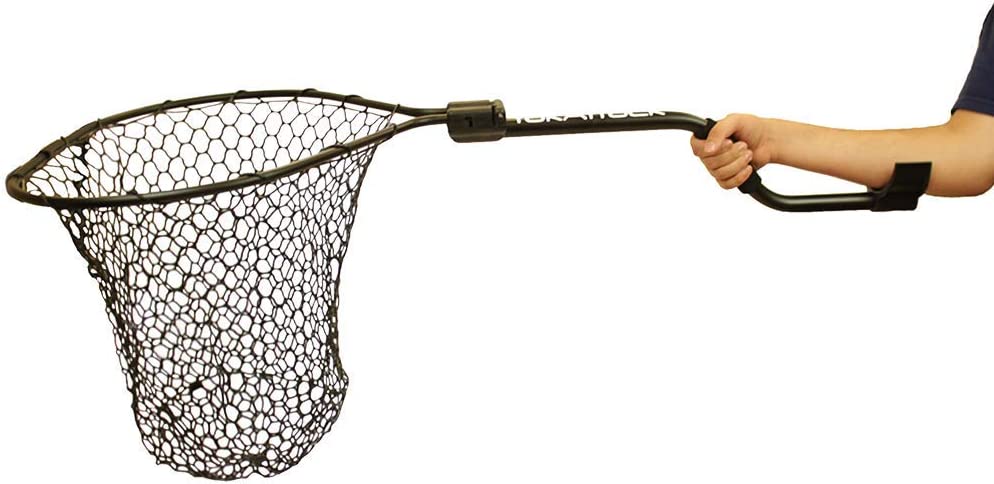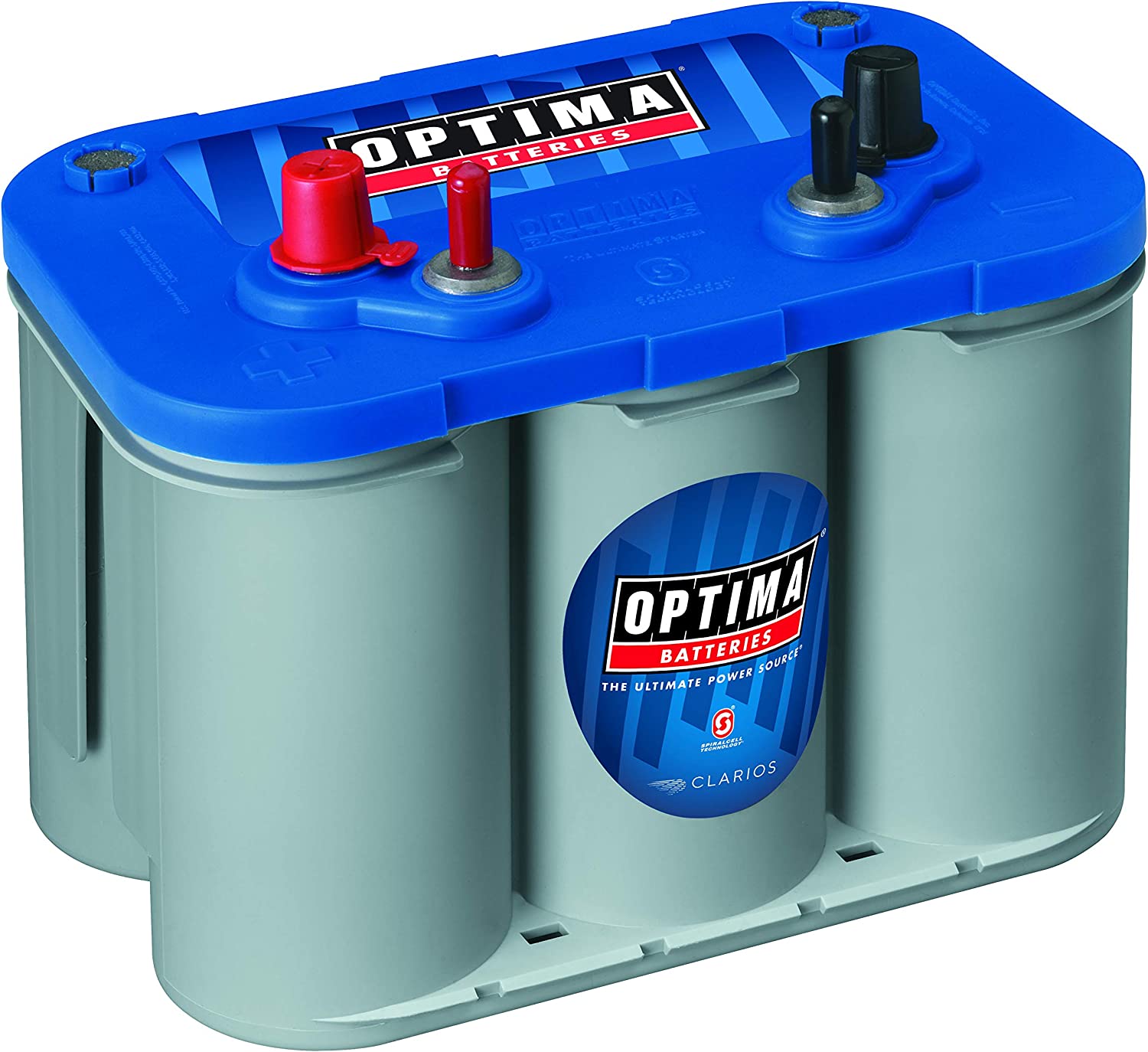World�s Apart? Loading up your car with your sea ride. Your gear is in a bag, and the sun is beginning to rise. It�s a calming experience. Moving through the calm water with a few simple strokes. Your movements...
World�s Apart?
Loading up your car with your sea ride. Your gear is in a bag, and the sun is beginning to rise. It�s a calming experience. Moving through the calm water with a few simple strokes. Your movements disrupt the serene waters below.
But we should back up just a moment.
What are you riding again? A kayak or a canoe? They share several features and design choices, but any experienced paddler will tell you that there are big differences between the two. This isn�t even taking into account the different types of canoes and kayaks there are.
Recreational canoes, sit-inside kayaks, inflatable kayaks, recreational kayaks, and racing kayaks. Oh yeah, that list could go on and on. So which is the best ride for you? To decide, you�ll need to be able to firmly tell them apart.
That�s why we will be going over the advantages and disadvantages of both vessels. Grab your paddles, and let�s get started.
Canoe vs. Kayak: Their Differences
Those who have never been on either seacraft would not be able to tell them apart. Some differences are very subtle, but they can have a big effect on the performance of the two.
My personal preference is the touring kayak, and not only because it was the first that I tried of the two. I prefer its nimbleness and speed, although I do wish it were more stable.
Let�s go over the biggest differences between the two. From the subtle to the obvious, pay close attention to how they handle and what they are designed specifically for. This will be the main determining factor in making the right choice.
The Cockpit or Seating Area
The seating arrangements within both kayaks and canoes are vastly different. Canoes tend to have elevated seating. It�s not very comfortable and resembles your average park bench-like seat.

Even a dugout canoe,�solo canoe, whitewater canoe, and solo or duo racing canoes all share the same seating arrangement. While this is more uncomfortable than what a kayak typically offers, the elevated seating does help with the angle of your strokes.
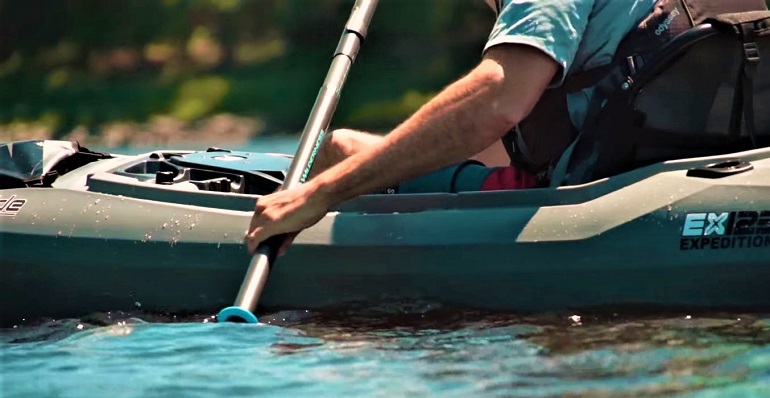
A sit-inside kayak, and any kayak for that matter, have a seat located within the bottom portion of the vessel. You are meant to extend your legs out in front of you, a much more comfortable position to be in.
Paddling with Canoes Vs. Kayaks
Kayak paddles�and canoe paddles are vastly different. Not so much in form as they are in number. A canoe only requires one paddle. Longer and much more efficient than two kayak paddles.
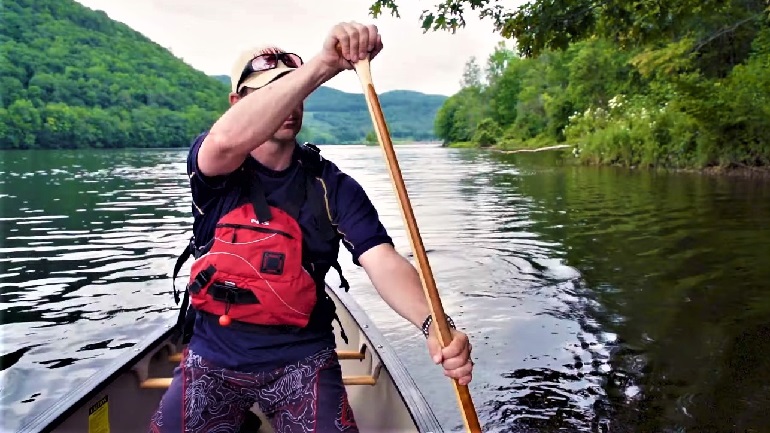
A canoe paddle is used for either side of the canoe, but it is not required to switch from one side to the next. There are certain strokes that can be used to help you travel in a straight line without the need for switching sides.

Kayaks, on the other hand, come with double paddles. One paddle for each side. You would think that this makes recreational paddling trips on a sea kayak easier, but double the paddles mean double the work.
Overall Boat Designs
Your typical canoe will have an open cockpit. The entire top is opened and exposed to the elements.�Top canoes�will come with two or maybe even three seats. As stated before, these seats are elevated and not the most comfortable option.
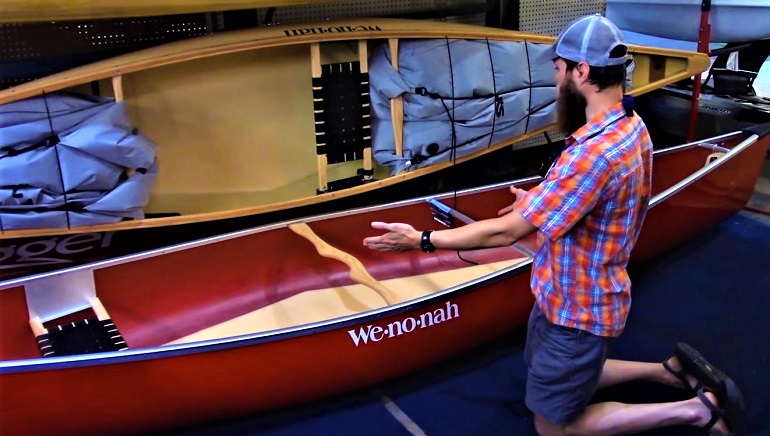
Sea kayaks will have an enclosed cockpit. You will sit lower in the water within them, and the closed deck is great for safeguarding your belongings. Many�sit-on-top kayaks�even have storage compartments located in either their bow or stern. Sometimes, an�inflatable kayak�will have storage holds in both areas.
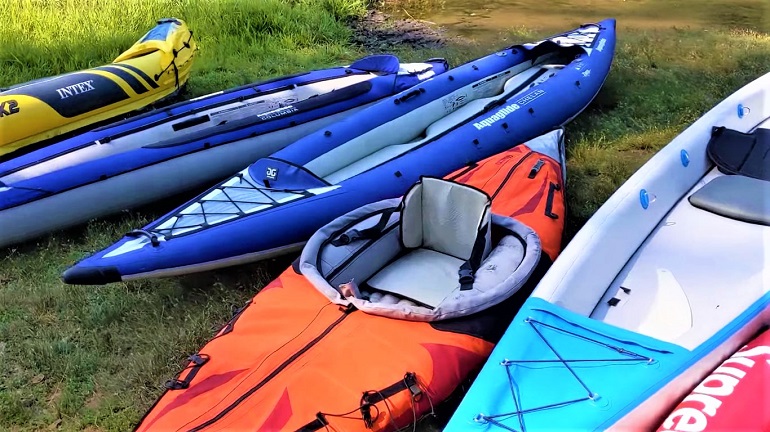
Unlike sit-on-top kayaks, typical canoes tend to be wide and pointed at both ends.
Hopping Onboard
Even something as routine as getting into your vessel is different for both a kayak and a canoe. To get into a kayak, you will have to slither in from a slanted angle. Make sure your kayak is in the water, then grab onto the dock and place your feet into the cock pit.
From there, you will push your legs further in until you�ve got enough space to sit in. It is best to practice this in slow-moving rivers and sheltered coastal areas.
Getting into a canoe is much more simple and easy.
Place your leading foot into the far side of the canoe and then lean into it. Your body will naturally shift to the side closest to the dock.
Should You Get a Canoe or Kayak?
Alright, now you must be starting to formulate a general idea of what both types of vessels offer. Perhaps you are even starting to consider which one you should be getting.
To help solidify your answer or change your mind, I�m giving you a quick rundown of the pros and cons of both canoes and kayaks.
The Advantages of a Canoe
A canoe is wider and has much more space for your gear. You can easily take with you a lot more gear with a canoe than with a kayak. This carrying capacity is what makes them a better option for traveling long distances.
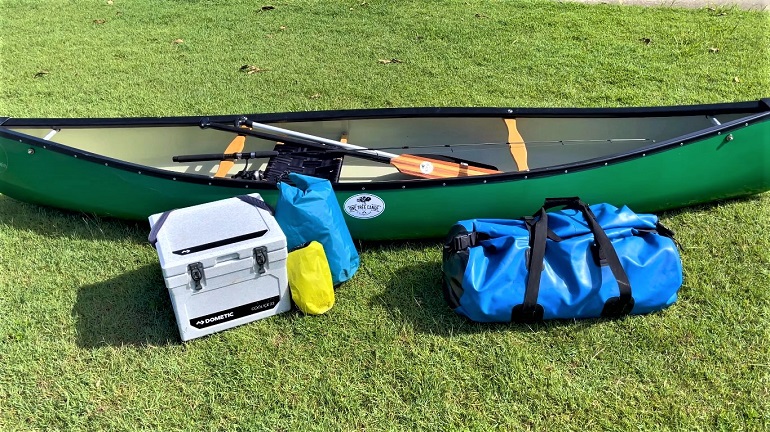
Canoes are also the more stable of the two. Even in challenging conditions, you won�t have to worry about capsizing your ride. This stability is great for those that may not have the strength to deal with tough situations.
Another canoe advantage is that you remain dry despite the totally open hull of the canoe.
The Disadvantages of a Canoe
The issue with canoes is that you are far more exposed than with a kayak. While remaining dry is easier in a canoe than with a kayak, partly because you sit higher, protecting your gear from the elements is not possible, especially if it is raining.

Canoes are also heavy and not at all easy to transport. There are inflatable canoe options, but they aren�t well known and perform vastly different from a regular canoe.
A lot more energy will be required to reach high speeds with a canoe, and not just because you have one less single-bladed paddle. Recreational canoes are wider and heavier than a kayak.
The Advantages of a Kayak
A kayak can go much faster and much quicker than a canoe. Less effort is required of you to reach top speed, and you can forget about having to worry about taking alternate strokes on alternate sides.

Recreational kayaks are also�easier to transport�and carry. There are plenty of inflatable options that are a solid pick-up, and any extra gear you bring along can be kept in dry storage. A highly underrated feature.
The biggest difference is that the seating is much more comfortable. You get to have your legs extended. A kayak is also much more maneuverable than a canoe.
The Disadvantages of a Kayak
Kayaks are awesome, but my main issue with them is that you will get wet. You can�t just have a calm outing and expect to remain dry. You sit too low, and the kayak is too low into the water itself for this to be a real possibility.
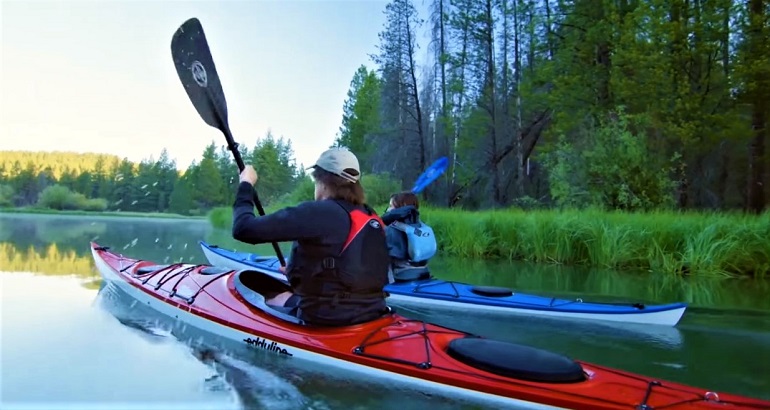
My other complaint is that handling rough waters in an inflatable kayak is significantly more challenging and scarier than with a canoe. Feeling like you are about to tip over is very common, and while it can be exhilarating, it�s not something that you�ll want to happen.
You could use a spray skirt; however, it will take you a while to get used to it. In the event of a capsize, a spray skirt can feel like a death trap.
Canoe vs. Kayak: And the Winner Is�
If you want something to take out in calm waters that is stable and will keep you dry throughout your journey, choose a canoe. A canoe is also optimal for bringing someone along and setting up a nice picnic.�Sounds nice, right?
However, if you like to explore on your own, love to feel the elements on your skin, and are not afraid to fight through some sticky situations, a kayak is for you. Kayaks, the whitewater kayaks specifically, will satisfy that adventurous itch that you have and will challenge you on whitewater rapids.
Remember that it is more difficult to transport a canoe, both in and out of water. However, the storage space and stability provided are optimal.
You can also experience the thrill of water exploration without breaking the bank by opting for the�best kayak under 500, a cost-effective alternative to pricier canoes, allowing you to dive into the world of kayaking with ease.
My Final Thoughts
When it comes to canoe vs. kayak, at first glance, they may appear the same, but they could not be any more different. Whether you settle on a kayak or canoe, I would advise you to first heavily consider their downsides.
In my opinion, it is within their cons that you will likely find out which one works best for you.
The post Canoe Vs. Kayak: Which One Is Best for You? appeared first on Extreme Nomads.



